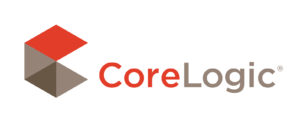This post is part of a series sponsored by CoreLogic.
Superior Data In. Superior Results Out.
Thunderstorms are some of the most dynamic phenomenon on earth, resulting in hail sizes that can vary from the size of a pea, to greater than softballs over a short geographic distance. Every year, hail fall and its related damage is a significant contributor of insurance claims and losses in the Continental United States. Furthermore, hail damage can go undetected for months, causing considerable collateral damage and resulting in very long claim tails, which can have a significant impact on customer satisfaction.
Most current methods to estimate hail fall rely either on ground reports or on weather radar observations. Both traditional approaches have substantial limitations. Public reports often have  unreliable locations, hailstones experience varied amounts of melting prior to being measured, and are reported by people with a diverse education on how to measure hailstones. In combination, they can cause the reported hailstone size to be inconsistent from observer to observer, even within a few miles from each other.
unreliable locations, hailstones experience varied amounts of melting prior to being measured, and are reported by people with a diverse education on how to measure hailstones. In combination, they can cause the reported hailstone size to be inconsistent from observer to observer, even within a few miles from each other.
To get around the limitations of public reports, weather radars operated by the National Weather Service (NWS) have been used to estimate the hail-size footprint. However, the energy returned to the radar (reflectivity) depends on the size and number of rain drops and hailstones, meaning that a few large hailstones could look like many small hailstones or even moderate rainfall. The estimate is further complicated when rain and hail exist in the same area, which is a common occurrence. A few of the methods that algorithms use to avoid these limitations, are utilizing data above the freezing level and new dual polarization technology. Unfortunately, even with these methods, weather radar data by itself is insufficient to relate what the radar sees in the storm, to the hailstones impacting property on the ground.
The proprietary hail verification technology from CoreLogic® combines radar data, public and social media reports, and the expertise of experienced meteorologists, to take advantage of the best aspects of each approach. Every storm is uniquely calibrated so that the coverage and high-resolution information contained in the radar data is optimally combined with observations on the ground. Furthermore, we can preserve the granularity in the radar data by using a sophisticated, physics-based morphing algorithm to continuously fill in the reflectivity data gaps every few seconds. This comprehensive approach consistently provides 500-meter resolution with neighborhood-level detail.
For the upcoming hail season, several recent enhancements have been made to the hail verification technology. Recent upgrades to the NWS radar network triples the amount of information we can use to further understand what the radar is seeing in the storm. The new data allows the algorithm to better differentiate between regions of heavy rain and hail, increasing the confidence of the algorithm and the granularity of the hail footprint. Additionally, enhancements in computing resources and cloud technology have sped up the algorithm, allowing us to increase the complexity of the algorithm and increase the final hail footprint resolution. Finally, we have improved our quality control process to better take advantage of the expert meteorologists that examine the available ground observations.

CoreLogic continues to maintain a commitment to the most precise hail algorithm in the market. As we designed our algorithm to meet the actual hail verification needs of customers, users have come to rely on our science as the standard for hail verification. CoreLogic science is one of the only sources for hail data designed to verify actual hailfall, not what a hailstorm may potentially produce. The ability to understand the specific impact of each storm can be challenging for carriers who are looking to enable a more proactive approach rather than a reactive storm response. Thus, forensic hail verification technologies exist so that carriers can compare detailed storm maps and reports with their books of business. The ability to perform this analysis leads to a better understanding of the impact of each unique storm. With this new ability to accurately verify and pinpoint affected areas, more targeted response plans can be developed to improve customer satisfaction, catastrophe response efficiency, and confidently detect fraudulent claims.
Click here to learn more about our CoreLogic Hail Verification Technology 2.0.
© 2017 CoreLogic, Inc. All rights reserved.
Topics Tech
Was this article valuable?
Here are more articles you may enjoy.




 USAA to Lay Off 220 Employees
USAA to Lay Off 220 Employees  Marsh McLennan Agency to Buy Fisher Brown Bottrell for About $316M
Marsh McLennan Agency to Buy Fisher Brown Bottrell for About $316M  FBI Says Chinese Hackers Preparing to Attack US Infrastructure
FBI Says Chinese Hackers Preparing to Attack US Infrastructure  Allstate Reports $731M in Q1 Pretax Catastrophe Losses
Allstate Reports $731M in Q1 Pretax Catastrophe Losses 

